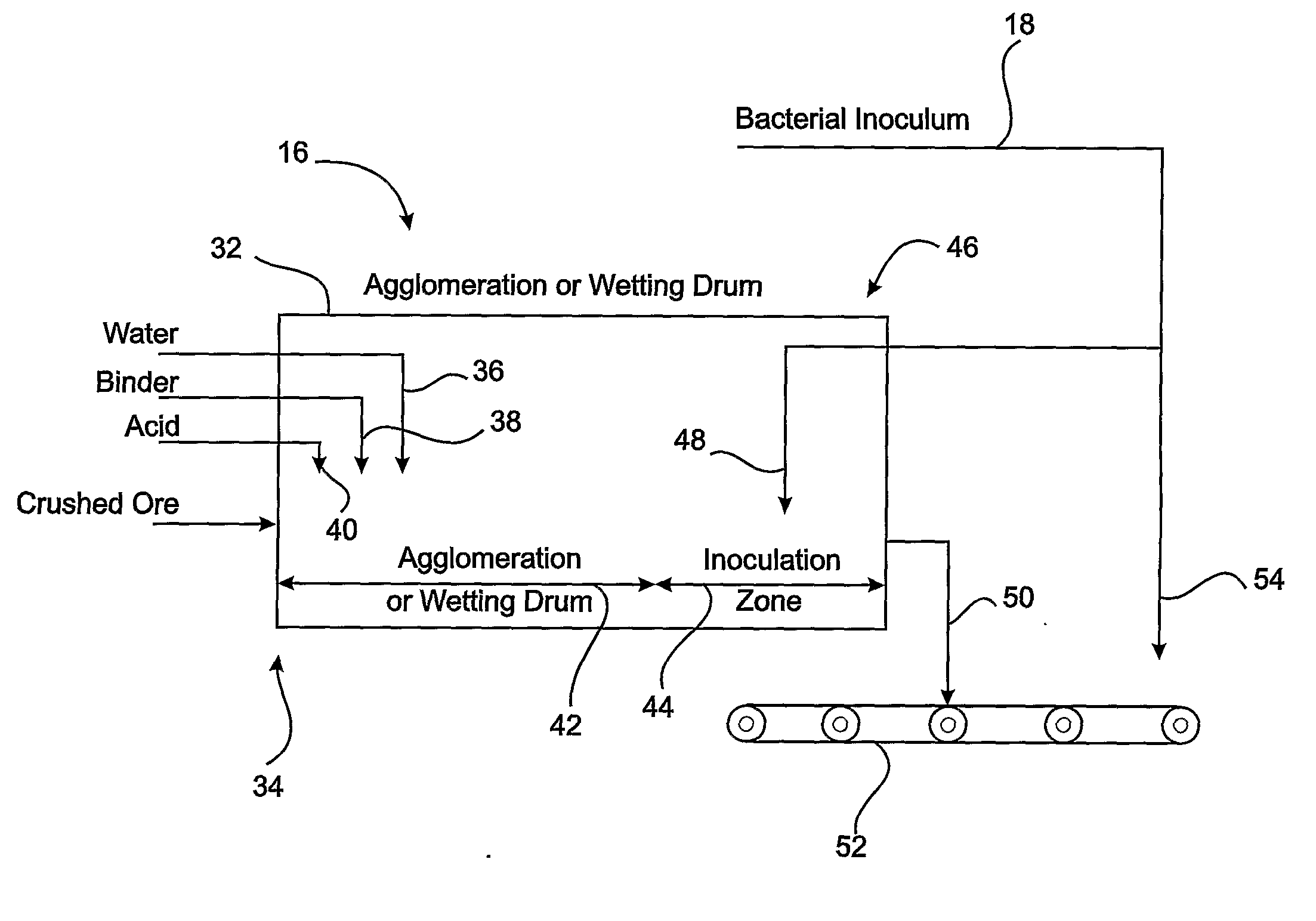Heap leaching of sulphide ores
a technology of sulphide ores and heaps, which is applied in the direction of biological water/sewage treatment, water/sludge/sewage treatment, chemistry apparatus and processes, etc. it can solve the problems of unfavorable sulphide ores leaching, etc., to achieve the effect of minimising any lag associated
- Summary
- Abstract
- Description
- Claims
- Application Information
AI Technical Summary
Benefits of technology
Problems solved by technology
Method used
Image
Examples
Embodiment Construction
[0058]A process 10 for the heap leaching of sulphide ores in accordance with the present invention is shown in FIG. 1. Ore is first mined 12 in known manner and forwarded to a comminution process 14, in which the ore is crushed to a pre-determined size. The size is in the range of about 2 mm to 200 mm and is determined by the liberation characteristics of the sulphides present. It is envisaged that larger sizes may be tolerated in certain circumstances, including the application of the present invention to use with dumps.
[0059]The crushed ore is subsequently passed to an agglomeration or wetting step 16. In the agglomeration or wetting step 16, to be explained in detail hereinafter, the crushed ore is firstly agglomerated or wetted and is subsequently inoculated with a bacterial inoculum 18.
[0060]Ore from the agglomeration or wetting step 16 is then passed from that step to a conveyor and is used to stack one or more heaps 20.
[0061]A bacterial farm 22 is provided for the substantial...
PUM
| Property | Measurement | Unit |
|---|---|---|
| size | aaaaa | aaaaa |
| retention time | aaaaa | aaaaa |
| size | aaaaa | aaaaa |
Abstract
Description
Claims
Application Information
 Login to View More
Login to View More - R&D
- Intellectual Property
- Life Sciences
- Materials
- Tech Scout
- Unparalleled Data Quality
- Higher Quality Content
- 60% Fewer Hallucinations
Browse by: Latest US Patents, China's latest patents, Technical Efficacy Thesaurus, Application Domain, Technology Topic, Popular Technical Reports.
© 2025 PatSnap. All rights reserved.Legal|Privacy policy|Modern Slavery Act Transparency Statement|Sitemap|About US| Contact US: help@patsnap.com



